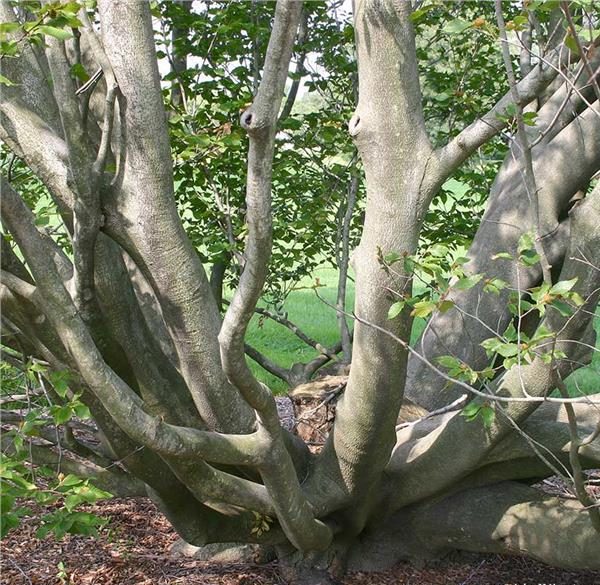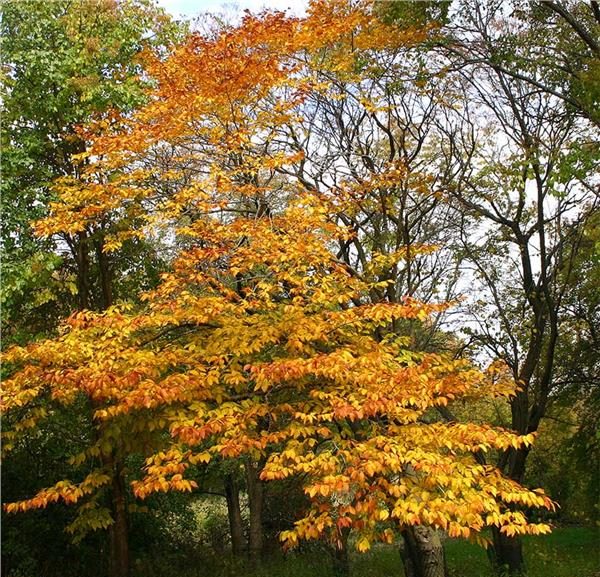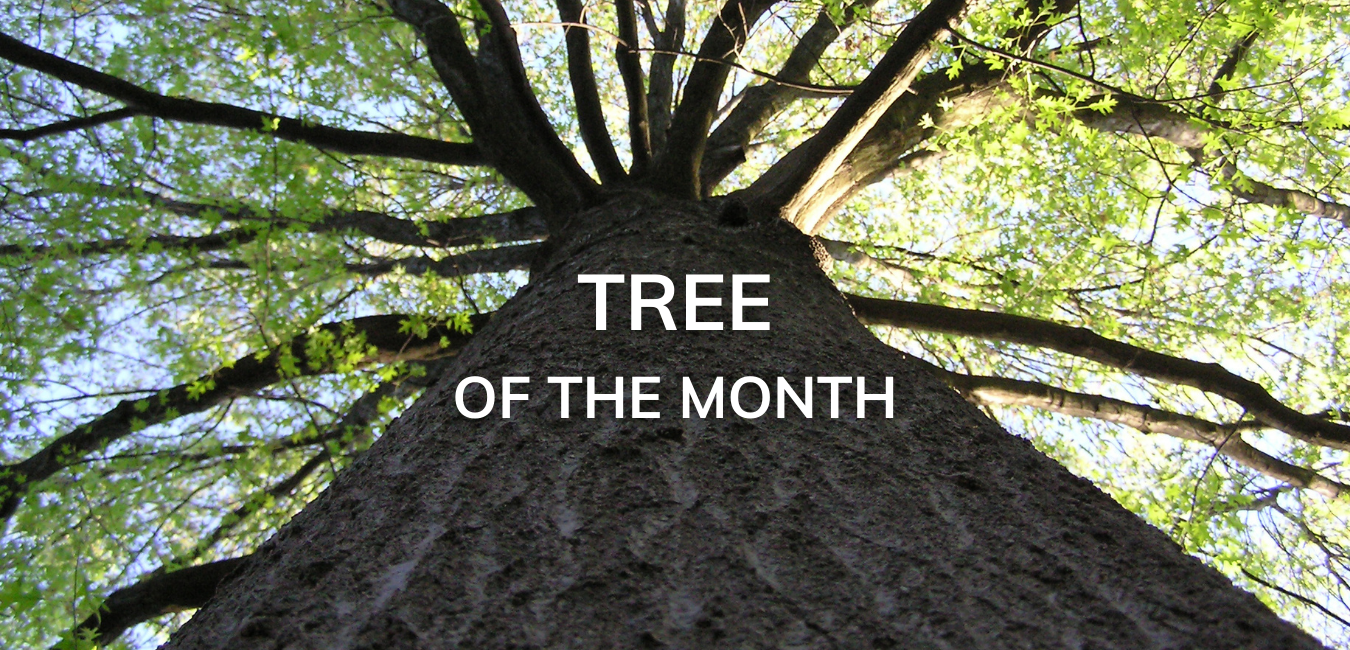
Photo by John M. Hagstrom 
Photo by John M. Hagstrom
The American beech (Fagus grandifolia) is a common tree in southern and central Ontario, and it grows as far north as Georgian Bay. This tree is most often associated with sugar maples (Acer saccharum); however, it is also found growing with eastern hemlock (Tsuga canadensis), white pine (Pinus strobus), and yellow birch (Betula alleghaniensis). This tree is important in forestry, as the wood is hard, tough and heavy, and it is used for flooring, furniture, containers, handles and woodenware. The American beech tree is a very shade tolerant species and grows best in moist, well-drained, and rich soils. While they have been known to grow in more thin, acidic soils, they are often scattered, smaller and less vigorous.
American beech can grow up to 25 m tall and 90-100 cm in diameter. They are often reported to reach 200 years or more. The bark of an American beech is smooth and a light bluish-grey that darkens with age. The leaves are alternate, simple, coarsely toothed, and dark green on top with a lighter green on the underside. The veins on the leaves are one of the American beech’s most distinct features. There are 9-14 straight and parallel veins on each side of the leaf. Each vein ends in a tooth. This means that if you follow the veins out from the centre of the leaf to the edge, each vein will end at a tooth.
These trees are often the victim of vandalism, as their bark is smooth and easily carved. These carvings can remain on the bark for years and can allow fungus and disease into the tree. North American beech trees are threatened by Beech Bark Disease. This disease is caused by beech scale insects (Cryptococcus fagisuga) that open small fissures in the bark which then allows the Neonectria faginata fungus to enter. Beech Bark Disease results in the dying of mature beech trees, which represents a threat to wildlife species who eat the tree nuts or use the tree for habitat. As well, this disease has an impact on the economy, as it reduces the marketability or use of beech in wood products.
References
http://treescanadensis.ca/fagus-grandifolia-american-beech/
https://www.uoguelph.ca/arboretum/thingstosee/trees/americanbeec
https://www.ontario.ca/page/american-beech
https://brucetrail.org/system/downloads/0000/1035/American_Beech.pdf
http://www.invadingspecies.com/beech-bark-disease/
Images Source
Hagstrom, John M. Arbor Day Foundation. “American Beech”


